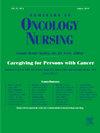The Use of Biomarkers in Precision Health Symptom Science—Opportunities and Challenges
IF 2.3
4区 医学
Q1 NURSING
引用次数: 0
Abstract
Objectives
Precision health symptom science applies person-centered approaches to elucidate interindividual differences in patients’ symptom experiences and incorporates omics methods with social, societal, and environmental determinants of health to develop symptom management strategies. By filling scientific gaps related to patients’ symptom experiences and their underlying mechanisms, interventions can be developed to improve quality of life and outcomes. The purposes of this article are to describe symptom phenotype development; review analytical approaches to identify a symptom phenotype; and discuss common and emerging methods for biomarker discovery and their implications in precision health symptom science.
Methods
Peer-reviewed research studies, review articles, and scientific expertise were synthesized to provide a broad overview of several methods of biomarker discovery and their implications for precision health symptom science.
Results
Approaches to symptom phenotype development and analytical methods for phenotype identification were reviewed. Common (ie, genomic, epigenomic, transcriptomic, proteomic, metabolomic, microbiome) and emerging (ie, polygenic risk scores, microRNA, epigenetic clocks, allostatic load, wearables) methods for biomarker discovery were described. Each method provides unique information to improve our understanding of the complex biological processes that underlie symptoms and may be used for risk prediction, screening, surveillance, and treatment response.
Conclusions
While the exemplar approaches to conducting precision health symptom science were shared through an oncology lens, they are generalizable across acute and chronic conditions.
Implications for Nursing Practice
Symptom biomarker identification is inherently complex and the methods for biomarker collection, processing, measurement, and analysis are continually evolving. Therefore, symptom scientists need to form transdisciplinary teams with experts in omics methodologies and bioinformatics. Despite the challenges, symptom scientists are well suited to lead the way in precision health symptom science to reduce symptom burden and improve quality of life among patients with various chronic conditions.
生物标志物在精准健康症状科学中的应用——机遇与挑战。
目的:精确健康症状科学应用以人为中心的方法来阐明患者症状经历的个体间差异,并将组学方法与健康的社会、社会和环境决定因素结合起来,制定症状管理策略。通过填补与患者症状经历及其潜在机制相关的科学空白,可以开发干预措施以改善生活质量和结果。本文的目的是描述症状表型的发展;回顾分析方法,以确定症状表型;并讨论生物标志物发现的常见和新兴方法及其在精确健康症状科学中的意义。方法:对同行评议的研究、综述文章和科学专业知识进行综合,以提供几种生物标志物发现方法及其对精确健康症状科学的影响的广泛概述。结果:综述了症状表型发生的途径和表型鉴定的分析方法。描述了常用的(基因组学、表观基因组学、转录组学、蛋白质组学、代谢组学、微生物组学)和新兴的(多基因风险评分、microRNA、表观遗传时钟、适应负荷、可穿戴设备)生物标志物发现方法。每种方法都提供了独特的信息,以提高我们对症状基础的复杂生物学过程的理解,并可用于风险预测、筛查、监测和治疗反应。结论:虽然通过肿瘤学的视角分享了进行精确健康症状科学的范例方法,但它们可以在急性和慢性疾病中推广。对护理实践的启示:症状生物标志物识别本身就很复杂,生物标志物的收集、处理、测量和分析方法也在不断发展。因此,症状科学家需要与组学方法和生物信息学专家组成跨学科团队。尽管面临挑战,但症状科学家非常适合引领精准健康症状科学,以减轻各种慢性疾病患者的症状负担,提高生活质量。
本文章由计算机程序翻译,如有差异,请以英文原文为准。
求助全文
约1分钟内获得全文
求助全文
来源期刊

Seminars in Oncology Nursing
Nursing-Oncology (nursing)
CiteScore
3.40
自引率
0.00%
发文量
68
审稿时长
45 days
期刊介绍:
Seminars in Oncology Nursing is a unique international journal published six times a year. Each issue offers a multi-faceted overview of a single cancer topic from a selection of expert review articles and disseminates oncology nursing research relevant to patient care, nursing education, management, and policy development.
 求助内容:
求助内容: 应助结果提醒方式:
应助结果提醒方式:


